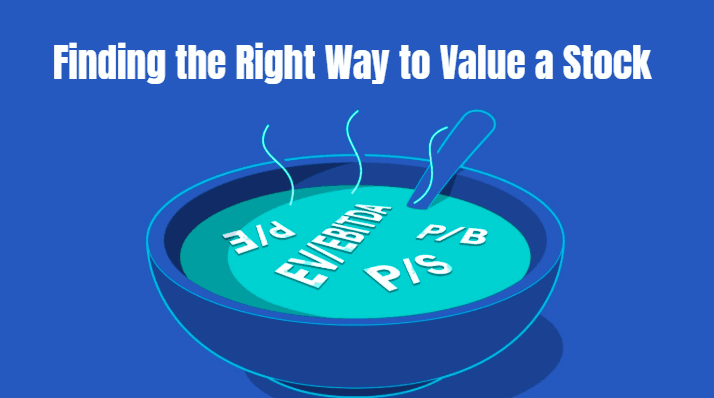Top 10 IPOs to Watch in India - Q4 2025: Which listings could move markets
_1760700415508.jpg&w=3840&q=75)
Imagine standing on a busy trading floor and hearing the familiar buzz suddenly rise into a roar - a few large IPOs open, retail interest surges, anchor investors queue up and the whole primary market lights up. That is exactly the moment India is in now.
Imagine standing on a busy trading floor and hearing the familiar buzz suddenly rise into a roar - a few large IPOs open, retail interest surges, anchor investors queue up and the whole primary market lights up. That is exactly the moment India is in now. Q4 2025 has delivered a heavy slate of high-profile offers, and investors — retail and institutional alike — are asking the same question: which IPOs are worth watching, and how should one think about allocation, risk and the likely market reaction?
This long-form guide is written for investors who want the full picture - macro context, a clean Top-10 watchlist, company-level snapshots, valuation cues, allocation considerations, and the concrete signals to follow over the listing window. It is human-first, research-driven and structured so you can skim to the parts you need or read end-to-end for the full thesis.
Sector insight - why the Q4 2025 IPO wave matters
Primary markets matter because they reshape ownership, channel fresh capital into growth plans, and set sectoral leadership for years. Q4 2025 looks like an active window for Indian equity capital markets - heavyweights and well-known private companies are testing public valuations. Two headline examples that have already dominated investor conversations are Tata Capital and LG Electronics India - both drew intense interest during their subscription windows. Tata Capital’s issue saw strong demand as it closed, and LG Electronics India’s IPO became one of the most subscribed listings in recent memory.
Why does that matter to you as an investor? Because large, well-subscribed IPOs do three things simultaneously - they generate short-term market momentum (list-day moves), they attract media attention (helping discovery and flow), and they change capital availability for other issuers. In short, Q4 2025 is not just another quarter - it is a concentrated test of investor appetite and market liquidity.
Quick take - what to watch in primary markets now
- Anchor allocations and anchor investor mix - large sovereign/sovereign-like anchors (sovereign wealth funds, large pension funds) are a bullish signal.
- Subscription rates across categories - QIB (Qualified Institutional Buyers) appetite vs. retail subscription tells you where initial demand is coming from.
- Grey market premium (GMP) - while noisy, sharp GMP movement often sets listing-day expectations.
- Valuation vs listed peers - a simple multiple comparison helps judge whether the IPO is priced sensibly.
- Management quality, distribution reach, and long-term earnings cadence.
Top 10 IPOs to Watch - Q4 2025 (at-a-glance)
Below is our watchlist for Q4 2025. These are ranked not as strict buy/sell calls but as the highest-impact issues that will shape the quarter’s primary market narrative.
- Tata Capital - Financial services, large issue, strong backing and distribution.
- LG Electronics India - Appliance manufacturing and distribution - recorded exceptional subscription levels in its recent offer.
- HDB Financial Services - NBFC with a wide retail footprint and high market visibility.
- WeWork India (if public offer / InvIT components) - Real assets and workplace play as part of the reworked structure.
- Canara HSBC Life Insurance - Life insurance IPOs attract long-term structural interest given distribution networks.
- Anantam Highways InvIT - Infrastructure InvITs remain relevant for yield-focused allocations.
- Rubicon Research - Pharma-chemical intermediate player with growth story.
- Hero Fincorp (or other NBFCs) - Consumer & vehicle finance names reflecting retail credit demand.
- Priority Jewels / Specialty Consumer Names - Smaller consumer IPOs with niche franchises listed on calendars.
- Mid-sized tech / services IPO or private-equity-backed play - watch listings that provide a tech-ecosystem angle (startups & scale-ups that open public windows).
(Note: the IPO calendar in Q4 2025 is fluid - confirms, allotments and secondary deals can change timing. Use the above as the prioritized watchlist rather than a rigid ranking.)
Company snapshots - what to know before you apply
We walk through a focused snapshot for the most consequential names on the list. Each mini-profile covers the business, why it matters, valuation signals to check, and the principal risks.
1) Tata Capital - financial services large offering
- What they do - diversified financial services: consumer lending, SME finance, wealth, and other NBFC businesses under the Tata umbrella.
- Why it matters - large issue size, strong corporate brand and distribution; institutional appetite tends to be high for Tata group-affiliated issues. Tata Capital’s issue closed with solid subscription metrics, reflecting broad investor interest.
- Valuation cues - compare P/B, P/ABV, and core ROE metrics vs peers in the diversified NBFC universe. Watch for embedded cross-sell potential and asset quality disclosures.
- Risks - cyclical credit cycles, regulatory restrictions on NBFCs, and provisioning dynamics if asset quality softens.
2) LG Electronics India - consumer appliances and distribution
- What they do - large appliance maker and distribution network in India - manufacturing, retail distribution and after-sales.
- Why it matters - the IPO was exceptionally well-subscribed and was a headline event in Q4. Strong retail and QIB demand has set listing expectations higher. Anchor allocations included large global investors, underscoring cross-border interest.
- Valuation cues - check EV/EBITDA and margin comparatives vs listed appliance peers. Retail expansion economics and channel inventory cycles are key.
- Risks - cyclical consumer demand, commodity-linked input pressure (steel, plastics), and inventory / GST dynamics.
3) HDB Financial Services - NBFC focused on retail lending
- What they do - retail and vehicle finance with deeper rural and semi-urban reach (depending on business model).
- Why it matters - NBFC IPOs often attract both PSU and private insurers given distribution and credit growth themes. Watch retail tranche interest for retail sentiment.
- Valuation cues - NIM trends, net stage 3 ratios, and leverage.
- Risks - asset quality cycles and wholesale funding volatility.
4) WeWork India / Real-estate-related InvITs
- What they do - flexible workspace play or real-estate investment trust structure - may surface through structured offerings.
- Why it matters - investors seeking yield and structural office demand recovery pay attention to high-quality leasable assets and contractual rent escalations.
- Valuation cues - occupancy rates, long-term lease covenants, sponsor track record.
- Risks - office demand sustainment and interest-rate sensitivity.
5) Canara HSBC Life Insurance
- What they do - life insurance distribution with bank partnership backing - large addressable market.
- Why it matters - insurance IPOs test retail and institutional patience; long-term cashflow visibility drives investor interest.
- Valuation cues - embedded value (EV), new business margins (NBM) and persistency rates.
- Risks - regulatory capital needs and competitive pricing in protection segments.
6) Anantam Highways InvIT (infrastructure InvIT)
- What they do - toll road assets packaged as an InvIT - yield play for conservative allocations.
- Why it matters - InvITs offer alternatives to equity for yield-focused investors; see sponsor track record and traffic growth assumptions.
- Valuation cues - yield, traffic CAGR assumptions, and interest-rate sensitivity.
- Risks - traffic variance, regulatory toll-set mechanisms, and refinancing risk.
7) Rubicon Research - specialty pharma / chemical intermediates
- What they do - niche drug intermediates and chemical specialties with export orientation.
- Why it matters - pharma/chemical bridging companies can be re-rated if they control scarce intermediates or differentiated processes.
- Valuation cues - gross margins, concentration of revenue to a few clients, and regulatory approvals.
- Risks - client concentration, regulatory non-compliance, price erosion.
8) Hero Fincorp - consumer & vehicle finance
- What they do - financing for two-wheelers and other consumer vehicles; distribution tie-ups with OEMs.
- Why it matters - finance companies tied to vehicle OEMs often gain distribution leverage and strong loan origination flows.
- Valuation cues - NIMs, cost of borrowing, GNPA trends for vehicle finance.
- Risks - cyclical demand for vehicles and delinquency in semi-urban cohorts.
9) Priority Jewels and other niche consumer IPOs
- What they do - niche jewellers or consumer franchises seeking public funds for expansion.
- Why it matters - jewelry retail chains often attract domestic retail interest and can list strongly if marketed well.
- Valuation cues - same-store sales growth, gross margin per gram, and store footprint expansion pace.
- Risks - gold price volatility, discretionary spending softness.
10) Tech/start-up follow-ons and mid-sized services IPOs
- What they do - tech platform plays, exchanges, or service providers moving to scale.
- Why it matters - successful listings of tech or platform names can reset multiples for the sector and re-ignite growth narratives.
- Valuation cues - revenue growth visibility, unit economics and customer cohort metrics.
- Risks - burn-rate, path to profitability and high multiple compression if growth stalls.
Data & market trends - the Q4 picture in numbers
- Strong subscription trends - LG Electronics India’s IPO saw an extraordinary subscription and was one of the most heavily bid offers in recent memory, signalling robust primary market demand. Tata Capital’s book also recorded notable subscription rates on closing. These are not isolated events - they reflect a broadening of retail participation and improved QIB appetite in 2025.
- IPO calendar density - Q4 2025 presents a dense calendar with NBFCs, consumer goods, life insurance and infrastructure-focused offerings. Platforms like Groww, AngelOne and Moneycontrol list multiple mainline and SME IPOs across the window - meaning liquidity will be divided across many issues and some selective decisions will be required.
- Anchor investor participation - several of the large IPOs attracted anchor commitments from global asset managers and sovereign funds, indicating institutional comfort at announced price bands for selected names. Anchor interest is a helpful lead indicator for QIB appetite during the retail subscription phase.
Growth drivers behind the IPO momentum
- Domestic savings and retail participation - Indian retail investors continue to allocate to primary markets as a channel for immediate listing gains and long-term ownership.
- Corporate capital needs - companies are using the public route to fund expansion capex, deleverage balance sheets or provide exit liquidity to private backers.
- Macro stability and policy tailwinds - steady GDP momentum and supportive tax/regulatory signals help issuers price risk.
- Private equity exits - 2025 is seeing several PE-backed companies testing the market; that dynamic increases deal flow.
Growth risks - what can go wrong
- Volatility on listing day - high expectations can produce steep first-day moves but also sharp pullbacks if market sentiment turns.
- Macroeconomic shocks - a sudden macro event or global risk-off can wipe out primary market appetite quickly.
- Overpricing risk - aggressively priced IPOs can see immediate corrections; valuation discipline matters more than hype.
- Concentration risk - too many large issuances in a short window dilutes demand and can leave some issues undersubscribed.
Investor checklist - practical steps before you apply
- Read the RHP / Prospectus - focus on business model, affiliated party transactions, related-party revenue and capex use.
- Check anchor list and their average price - strong anchor participation is a positive signal.
- Compare valuation to listed peers - don’t commit if the IPO trades at materially higher multiples than comparable companies without justifying growth.
- Look at subscription momentum - category-wise subscription gives quick demand signals - QIB vs HNI vs Retail.
- Decide allocation strategy - many investors split allocation between a small “listing pop” speculative slice and a longer-term core allocation if the thesis is strong.
- Watch the GMP cautiously - use it as one of many data points, not a definitive price predictor.
- Consider lock-ins and promoter intent - board and promoter share sale structures, lock-in periods, and post-listing dilution plans matter.
Signals to monitor in real time
- Allotment ratio updates - especially for the retail slab.
- GMP movement on popular issues - often sets retail expectations for listing.
- QIB subscription and anchor price levels - institutional interest is the backbone of a stable listing.
- Management interviews in the run-up - clarity and confidence from leadership matter for retail perception.
- Post-listing volume and price resilience - a strong first week gives a better base than a one-day spike.
Distribution and timing - tactical notes
- If you are a short-term speculator, you will want immediate allotment odds and GMPs - that will guide whether you take a small allocation for a potential listing gain.
- If you are a long-term investor, focus on the business model, durable competitive advantages, management track record and capital allocation discipline. Don’t let listing hype substitute for fundamentals.
- For HNI and institutional investors, look at anchor and QIB demand as a leading indicator of where institutional conviction lies.
Strategic conclusion - How Legacis thinks about Q4 2025
Q4 2025’s IPO window is significant - not just because of headline names, but because the market is showing a renewed capacity to absorb large, well-structured offerings. That creates opportunities for both short-term gain and long-term ownership, but it also raises the bar on due diligence. Our approach for this cycle is simple and consistent:
- Prioritize quality of business and clarity of capital use - good companies priced reasonably beat speculative names priced aggressively.
- Use subscription and anchor metrics as real-time filters - they tell you where smart money is allocating.
- Keep position sizing small if the listing is speculative; lean in more where the company offers durable growth and clear margins of safety.
Stay ahead of the IPO cycle - Legacis Capital will publish company-specific deep dives on selected listings, RHP checklists and a downloadable one-page watchlist. Follow our newsletter for timely updates.
Disclaimer - The analysis above is educational and informational in nature. It should not be construed as investment advice or a recommendation to buy or sell any security. Investors should read the full RHP/prospectus of an offering, consider their own investment objectives and risk tolerance, and consult a SEBI-registered investment adviser before making investment decisions. Legacis Capital does not assume liability for any investment outcomes arising from actions taken on the basis of this material.


_1755606872650.png&w=3840&q=75)



